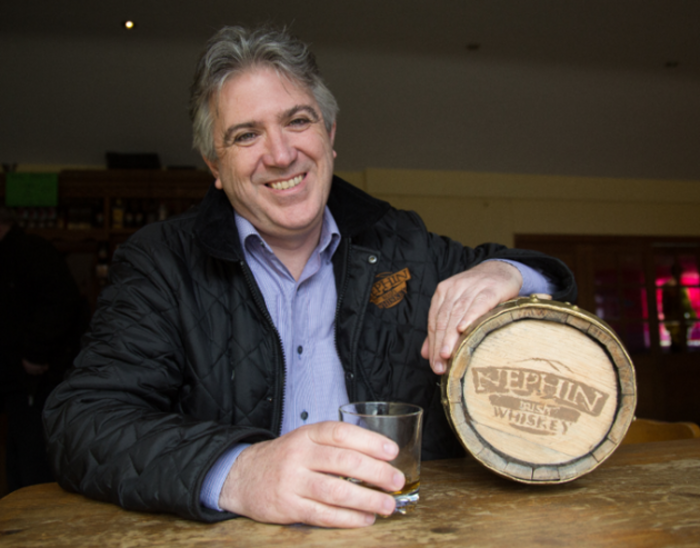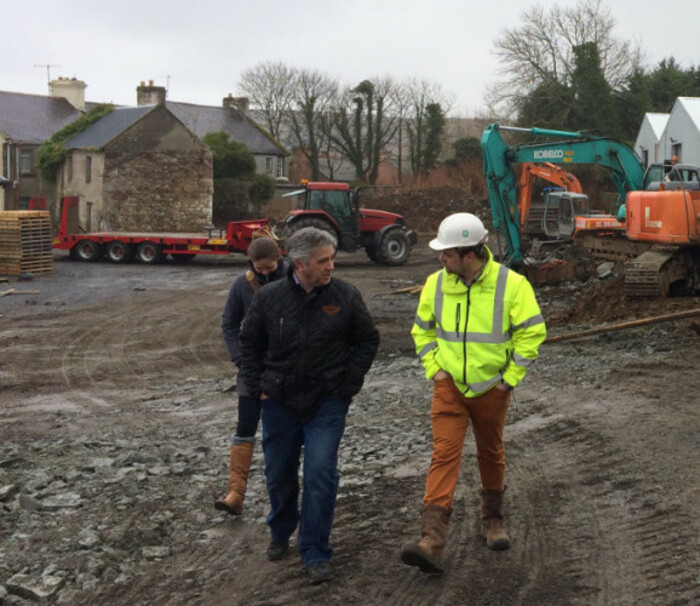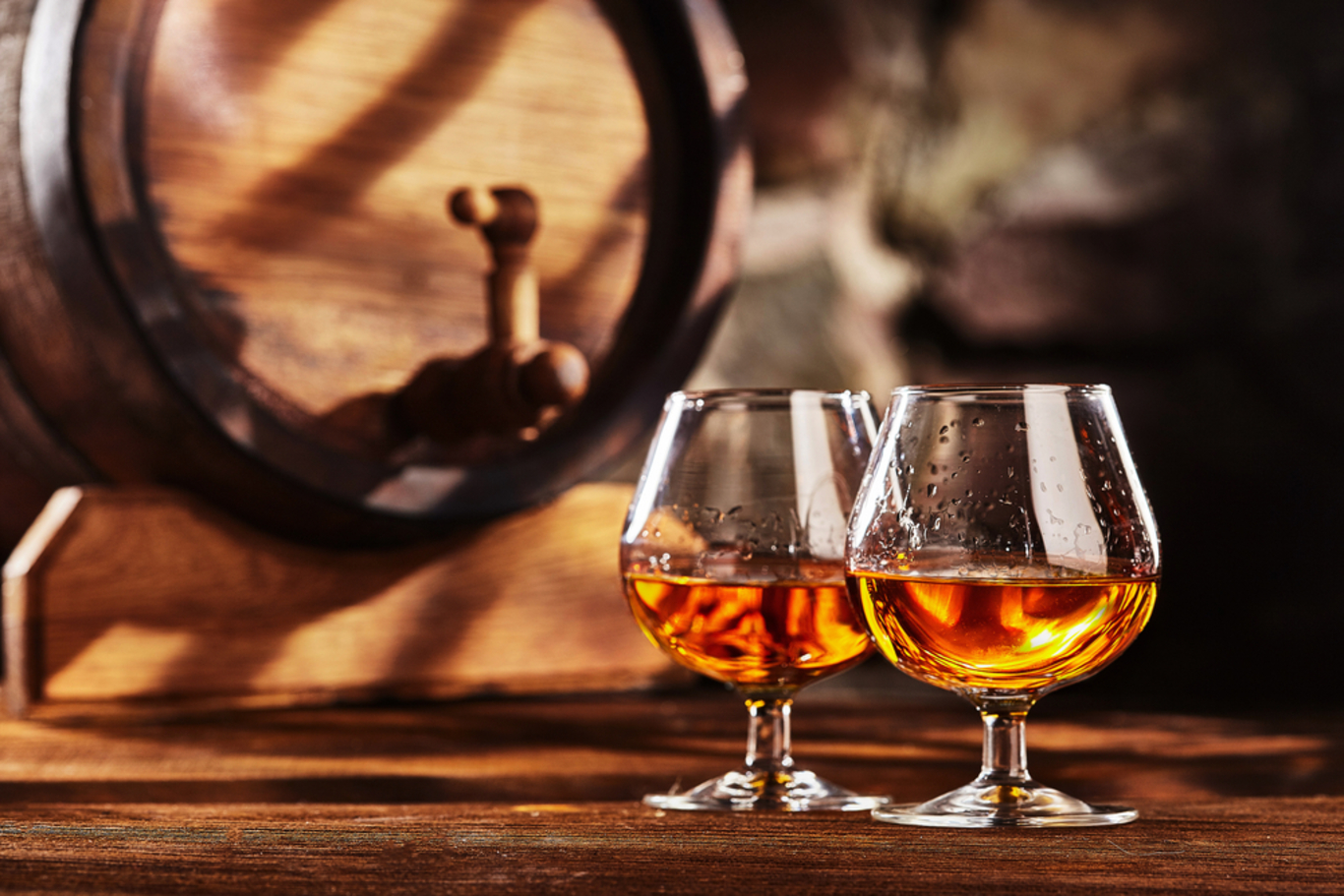After five years and more than €6m, Nephin Whiskey will finally start production
The Mayo distillery will be operational next year – but it’ll be a while until the Irish product hits shelves.
NEARLY FIVE YEARS after announcing plans to open their own whiskey distillery in Mayo, Paul Davis and his wife Jude are about to get the operation off the ground.
Construction has just finished on the 10,000 sq ft Nephin Irish Whiskey distillery in Lahardane and internal installation is due to begin in January, which will mean production can finally begin around May, according to Davis.
Once it is up and running, the distillery will produce up to 3,500 casks of peated single-malt whiskey annually, with the option to double capacity four or five years down the line.
DCU lecturer Davis, who has a background in procurement and supply chains, officially launched his plans in 2014 and said that production would be up and running the following year.
But the process has taken longer than initially expected, from getting the right investors on board to dealing with delays during construction.
“A lot of work has gone on behind the scenes. We did a lot in the background in terms of getting suppliers, distribution, funding,” Davis told Fora.
“It took a while, but we want to make sure it’s future proof and that we can keep control of what’s going on.”
The project required upfront investment, which was originally slated at around €5 million. But Davis said that the distillery has raised around €6.5 million so far and there are plans to have another funding round next year to raise €1.5 to €2 million.
The business has attracted a small number of private investors, including Michael Walsh of shoe company Dubarry, making use of the EIIS tax-relief scheme.
 Paul Davis
Paul Davis
Future proofing
Making Irish whiskey is a long-term business as the spirit has to be matured for at least three years. But Davis said there is a possibility that Nephin’s whiskey may go through a longer maturation process.
“We won’t release it until it’s done. It would be a shame after waiting so long to rush the product.
“It’s a killer because you might be looking at five to seven years before you can sell the whiskey. With a premium drink it could mature for 10 years.
“But we always knew this would be a long-term project. It’s a tough business, but it’s not a business you go into thinking you’ll make money in the first year or two.”
Although it may be a few more years until Nephin whiskey is hitting the shelves, the business intends to launch its first product in May or June of next year.
This will be a new-make spirit, which is produced at the distillery but not matured in the same way as whiskey, to be targeted at the cocktail market.
Davis said that he also considered the idea of producing gin or vodka to help get the business off the ground, as these don’t require the same lengthy maturation period, but decided that he wanted to focus all his attention on whiskey.
“It’s very tempting when you see other brands doing that. People said you have to do it to get yourself on the shelf but we decided to stay firm. We want to make whiskey and we want to minimise distractions from anything else.”
 Davis during construction at Nephin distillery
Davis during construction at Nephin distillery
Davis said that the business’s main focus will be on the US market initially, although products may be sold in Ireland and Europe at some stage.
To facilitate these exports, the company has set up an importation business in the US and is working on distribution agreements in several parts of the country.
Although he wouldn’t go into detail about how much a bottle of Nephin Irish Whiskey is expected to cost, Davis said that it will be a premium product that will “compete with the single malts coming out of Scotland”.
Part of the premium appeal is that the whiskey will use malt from the distillery’s own facility – which is due to be built onsite late next year - and then matured using barrels from its own cooperage, which is located in nearby Foxford.
Changing market
The Irish whiskey industry has undergone some major shifts since Davis first announced his plans for Nephin. In 2014 there were only four distilleries in the country, but just a few weeks ago Blackwater Distillery became the 21st to open its doors.
Last year, exports were worth around €600 million but the Irish Whiskey Association plans to double that figure by 2030.

Drinks tourism has also become big business in Ireland. The Guinness Storehouse was the top paid tourist attraction in the country last year with 1.7 million visitors, but whiskey producers are beginning to tap into this market.
The number of visitors heading to Irish whiskey distilleries grew to 814,000 in 2017 – up 11% compared to 2016 – with Jameson’s distillery experience in Dublin accounting for just over a third of that tally.
At Nephin, Davis said that visitors will be able to see the whiskey-making process and taste products, but it’s more about adding value to his brand rather than creating an extra revenue stream.
“At first we said we were aiming for 10,000 visitors a year, but we could hit 20,000 or 30,000. If it happens, it happens,” he added.
The distillery currently has a team of four but that is expected to increase to 16 staff next year once production is up and running. After years of planning and investment, Davis said that he is now focused on moving into the next phase of his business in 2019.
“We had a skeleton building and we wanted to build something that’ll be here for the next 60 years,” he added.
“We could have built something smaller or done it quicker, but we wouldn’t have the distillery we have now. We wouldn’t have the knowledge, the contacts. We have learned a few lessons along the way and have a clearer vision now.”






